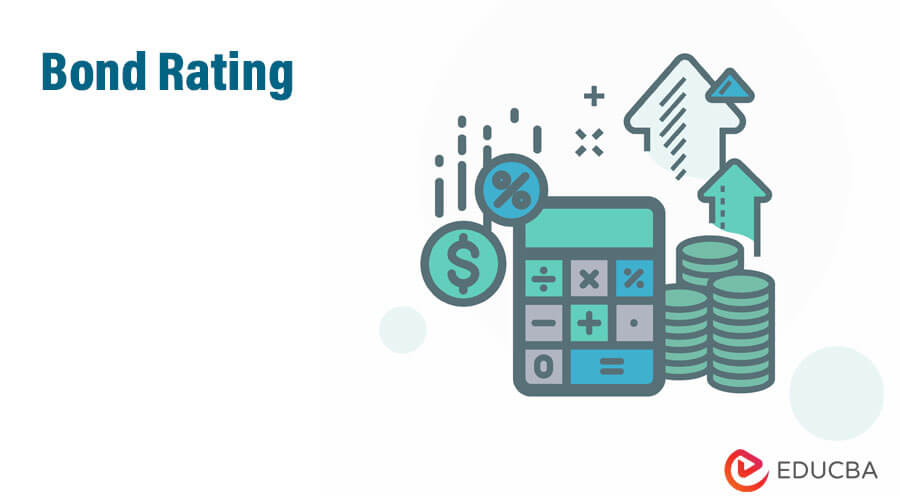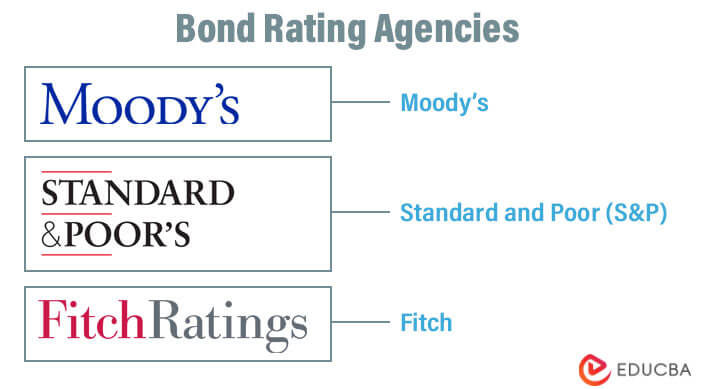Updated July 17, 2023

Definition of Bond Rating
Bond Rating is an alphabet-based scoring system through which the financial creditworthiness of financial instruments such as Bonds is analyzed on multiple quantitative and qualitative factors and presented to potential investors. Bond Rating acts as one of the important factors in decision making to make an investment decision.
A Higher Bond rating is always a good sign of the financial strength of the Issuer and results in better Interest pricing for the Issuer and a good safety net for the subscribers.
Explanation
Bond Rating involves an independent assessment of the issuer’s creditworthiness related to a specific issuance of fixed Income Instruments such as Bonds by an independent rating agency. Based on the assessment undertaken in qualitative and quantitative terms, an alphabetic rating is assigned to the Bond Issue, such as AAA, AA, etc., which acts as a mechanism for pricing interest rates on such bond instruments. The higher the rating lower the interest rate due to the inherent low risk, and the lower the rating, such as BB, and below higher the interest rate the issuer has to pay due to the inherent high risk the subscriber takes.
How Does Bond Ratings Work?
Bond Ratings synchronize with the ratings assigned and the issuer’s financial credibility. Bond ratings led to the classification of Bond into Investment grade (ratings from AAA to BBB) and Non-Investment grade (BB & below ratings). Many Funds invest only in Investment-grade Bonds, and as such, bond rating falling in that category makes them qualified for such investment. Bonds rating in non-investment grade carries a high risk of default and, as such, carries a high-interest payout by the issuer to compensate for the extra risk of default undertaken by the investor.
Normally whenever an Issuer plans to issue Bonds in the securities market, it is compulsorily required to get credit ratings from the registered rating agencies, which evaluate such issuance of Bonds on various qualitative and quantitative parameters to determine the relative safety of investments in such Bond issue and based on the same a Bond Rating is assigned.
It is important to note that Bond Ratings imply meaning both on a standalone basis as well as on a relative basis; however, the interest pricing is always compared by investors on a relative basis. For instance, an Investor would demand a higher interest rate to invest in a Bond Instrument with a “BBB” rating compared to a Bond Instrument with an “AAA” rating due to the higher amount of safety associated with “AAA” rated paper compared to a “BBB” rated paper.
How is Bond Rating Calculated?
Bond Rating is calculated by applying various quantitative and qualitative factors to arrive at the rating score, which is then mapped to the rating grade in alphabet format. Usually, the quantitative and qualitative factors include analyzing Management Risk, Financial Risk, Industry Risk, and overall economic risk. These risk factors are further subdivided into various risk factors scored on quantitative and qualitative factors to arrive at scores for each risk factor broadly and further aggregated to arrive at a total score which is then mapped with the rating range.
Bond Rating Chart
The Bond Rating chart depicts the different ratings assigned by the rating agencies globally. Globally there are three major rating agencies, namely Moody’s, Standard and Poor (S&P), and Fitch, which are discussed in the below section. The Bond Rating Chart assigned to Bond Instruments is depicted below:
| Fitch | Moodys | Standard & Poor | Investment and Non-Investment Grade Classification |
| AAA | Aaa | AAA | Investment Grade |
| AA+ | Aa1 | AA+ | |
| AA | Aa2 | AA | |
| AA- | Aa3 | AA- | |
| A+ | A1 | A+ | |
| A | A2 | A | |
| A- | A3 | A- | |
| BBB+ | Baa1 | BBB+ | |
| BBB | Baa2 | BBB | |
| BBB- | Baa3 | BBB- | |
| BB+ | Ba1 | BB+ | Non-Investment Grade |
| BB | Ba2 | BB | |
| BB- | Ba3 | BB- | |
| B+ | B1 | B+ | |
| B | B2 | B | |
| B- | B3 | B- | |
| CCC+ | Caa1 | CCC+ | |
| CCC | Caa2 | CCC | |
| CCC- | Caa3 | CCC- | |
| CC | Ca | CC | |
| D | D | D |
Bond Rating Agencies
The most popular Bond Rating agencies with a global footprint are as follows:
- Moody’s: Globally acclaimed rating agency part of the Big 3 rating agency with a global footprint and operations in more than 130 countries across the globe, FITCH is a leader in a certain class of financial instruments credit rating and has created a niche for itself in various segments. The rating agency has a niche in determining Loss given default (LGD).
- Standard and Poor (S&P): Among the three, S&P is the oldest and most acclaimed credit rating agency with global footprints worldwide and many of its wholly-owned subsidiaries. Together the rating agency provides credit ratings on a variety of Financial Instruments as well as on various segments such as Corporate, SME, etc., to name a few. It provides both short-term ratings (which are for instruments with a maturity of up to 1 year) as well as for Long term ratings (which are for instruments with a maturity of more than 1 year).
- Fitch: Among the top three rating agencies globally, FITCH is the smallest, and its rating scale is similar to Standard and Poor (S&P). The rating agency has a niche in determining the Probability of Default (PD) across the financial instruments it undertakes rating for.
Bond Ratings and Interest Rates
An inverse relationship exists between the Bond Ratings assigned and the interest rates applicable to the Financial Instrument. The higher the rating grade, such as AAA, AA, etc., the lower will be the interest rate due to the higher level of safety for the investors. Similarly, the lower the rating grade, such as BB, B, and so on, the interest rate will be higher due to the investors’ lower level of safety and higher probability of default.
Importance of Bond Rating
Bond rating plays an important role. A few noteworthy points are enumerated below:
- Helps investors in choosing the appropriate Bond instrument based on their risk tolerance.
- Enables issuers to better project their offerings and differentiate themselves from other issuers.
- Helps in the better functioning of the financial markets and enables banks and financial institutions to better manage their capital requirement by investing in the right bonds.
Recommended Articles
This is a guide to Bond Rating. Here we discuss the definition and how is the bond rating calculated. Along with importance. You may also have a look at the following articles to learn more –



